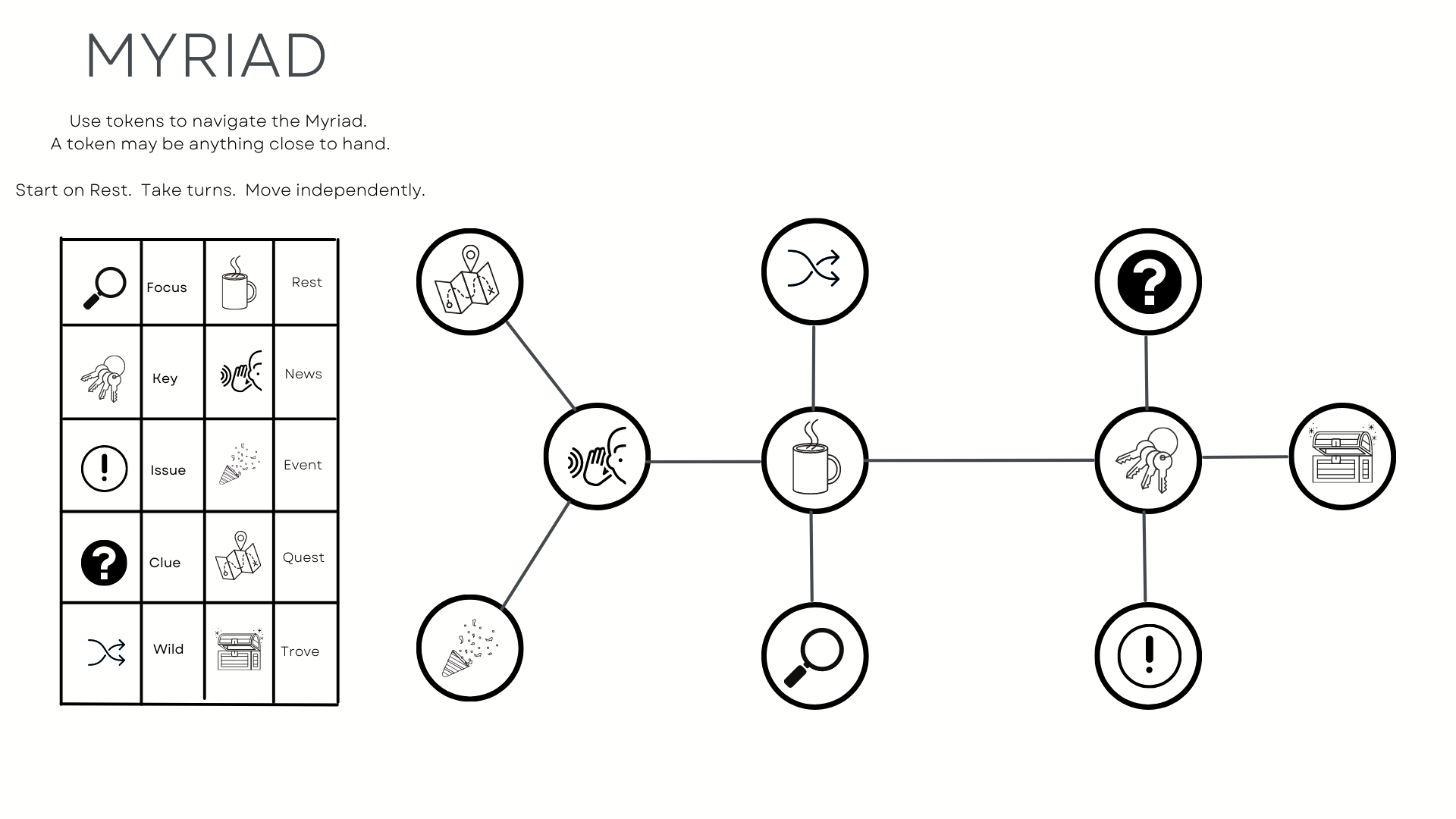I’ve been working on systems to enable asynchronous roleplay on and off the table. The ultimate goal is to create an Asynchronous Narrative System where player characters can easily be in different places and times without the need for a gamemaster.
When playtesting these systems with my group, it was really important to the players to always know what their options were and to be able to plan ahead.
Myriad
Myriad is my attempt to create a diceless oracle system. You can find the itch page for the project here. It’s free.
It looks like this:
Starting on Rest, the player has four options available to them - Focus, Keys, Wild, and News. To reach Trove, the player must conjure Keywords for the scene.
There is also a hex-flower version:
Why diceless? As a facilitator, I want players to always be aware of the narrative options they have available to them, but I also still want it to be a game and for the players to work for a reward. With this system, players spend the time between turns thinking about what they will do next.
Marauder
Marauder borrows terminology and functions from Graph Theory. A Marauder map consists of Vertices, Edges, and Weights. A vertex can be any narrative focus and the map is used to measure relationships between vertices. You can find the itch project here. It’s free.
It looks like this:
Edges connect vertices and weights detail the strength of the relationship between them.
The placement of the vertices on the map doesn’t indicate the physical or actual location of the node as in a traditional map. A town and city on opposite sides of the world could sit next to each other on a Marauder map, with a distance weight of “200 miles”.
Using the Myriad and Marauder together to play asynchronously.
Key & Token works well with Myriad and Marauder, although you could use any narrative roleplaying system.
Players use the Myriad to determine what they will create and add to the narrative. A player decides to move to ‘Focus’ on the Myriad and they create the capital city of the world. On the Marauder map, the player places a vertex with the capital city symbol and gives the city a name. From here, players could add leaders, organisations, and structures as connected vertices.
On the next turn, another player decides to do the same. They move to Focus on the Myriad and create a town on the Marauder map. The player adds an Edge to connect the town and city, then adds a distance Weight to indicate that the town and city are 20 miles apart.
As the Marauder map grows, the player characters can use tokens to place their characters in different places and move between them.
What’s next?
I’m developing a night and day system. A progress clock might do, but I have considered using a Lemniscate graph for this. The idea here is that a player could move their character token to the capital city on the marauder map, but while they visit the city in the dusk, another player is there at noon.
I’m very interested to hear people’s thoughts on these proposals, especially how these work in play. Thank you for reading this far, I hope you have found it useful.






